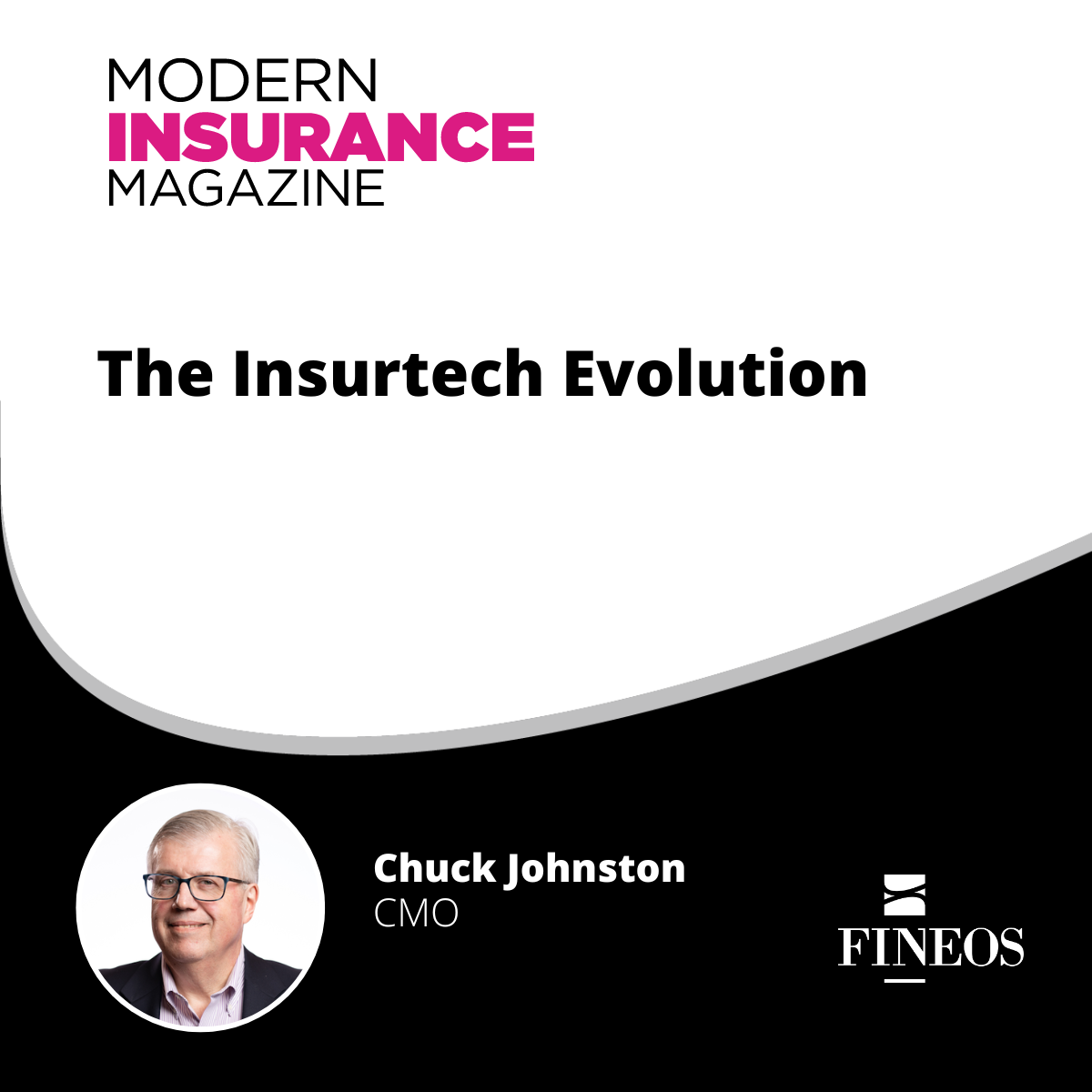Original article appeared in Insurance News Network December 2020
Chuck Johnston, CMO, FINEOS discusses how employers and insurance carriers are meeting the increasing demands of employee benefits.
The COVID-19 pandemic has caused an increased demand for benefits like telehealth, employee assistance programs (EAP) and mental health services for employees. Employers will need to move beyond traditional employee benefits to gain a competitive advantage in the talent marketplace.
As employers begin to recognize the growing desire for these new kinds of employee benefits, carriers will need to innovate to keep up with demand and provide a more complete product suite. It will be critical for carriers to adapt with innovative products and new technologies to remain strong contenders offering employee benefits suited for the modern workforce.
The Growth in Telehealth, EAP, and Mental Health Benefits
We have recently seen benefits like telehealth, EAP, and mental health gain popularity. Some of these benefits have largely been embedded in existing health plans, so the changes we’re going to see will mostly be in regard to exactly what those benefits include, and how they are used. In addition to these changes, the employee benefits industry can also expect to see some new trends in non-traditional benefits in 2021 which may well change employee benefits as we’ve all come to know them.
Telehealth, EAP, and mental health benefits have been historically underutilized, but it’s not surprising that we’re seeing a rise in interest in these benefits during this time of COVID-19. With stress levels at an all-time high, employees are beginning to wonder how their employers can help support them. Employers, in turn, are starting to explore benefits options that provide more holistic care for their employees to improve their quality of life and enhance their productivity at work.
Expanding Carrier Product Range
On the carrier side, one change that will definitely happen is developing more critical illness products, potentially tied to pandemics. Quite honestly, that’s a very difficult thing to do because of the wide potential impact of pandemic insurance, which we’re seeing on the property and casualty side right now. But there is going to be a desire for these products, and carriers should be prepared to deliver reasonable offerings that are useful to the employee while remaining a sustainable insurance offering.
In the past, people would have thought cancer insurance was ridiculous because the condition was completely unmanageable. But now, cancer certainly is managed, and cancer insurance is becoming one of the more popular products amongst ancillary benefits. Carriers can expect to see the need to create more and more products like this, probably more heavily reliant on information and machine learning than anything we’ve ever seen before on the product development side.
Streamlining Processes
In addition to products, carriers will also need to develop new processes. Particularly due to the introduction of telehealth for major medical, which will also impact things like disability check-ins, carriers are going to have to re-examine how they gather data around individuals. It’s going to become more likely that there will be more telehealth medical visits for anything that can possibly be done remotely.
Carriers are also going to have to revamp and streamline processes for the visits that must be done in person. We’re already seeing that to some extent, even just in physicians visits when someone has to go into an office for a blood test or other test where samples are collected. Because of the need for new and more efficient processes, we’re going to see an even greater reliance on digital processes. When one is not working physically with someone else, it allows for the opportunity to digitize things which may not have been done that way in the past
Enhancing Carrier System Requirements
Many carriers moving into the employee benefits space are taking refurbished property and casualty core systems or life systems and trying to extend them to handle the commercial side of life, accident, and health, as well as using them to deal with employee benefits. In this scenario, what carriers discover is that they are refurbishing and repurposing things to make them fit as opposed to designing them from the ground up so that they work properly for their needs.
Insurance providers will require a new breed of core systems designed specifically to develop and support the modern products they must offer and facilitate efficient digital processes. These systems need to be agile for carriers to keep up with rapidly changing employee benefits and break away from the traditional product boundaries still ingrained in legacy systems. Robust digital and mobile capabilities are also becoming increasingly necessary with so much remote work happening on both the carrier and employer side, which industry standard legacy systems are not equipped for.
The Future of Employee Benefits
In 2021, we’ll continue to see a growing focus on employee peace of mind as employers put new initiatives in place and seek to offer new benefits to ensure employees show up to work as their best selves. This means carriers will need to expand their product range and streamline their processes in order to keep up with the new demands from employers and their employees.
Most current insurance core systems are designed to meet immediate business requirements at best, with small regard for where our market is headed in the foreseeable future. As the employee benefits space begins to make changes to accommodate employee wants and needs, carriers will need to adapt and implement new technologies in order to provide more modern, people-centric offerings.
This article was contributed by Chuck Johnston, Chief Marketing Officer of FINEOS.


